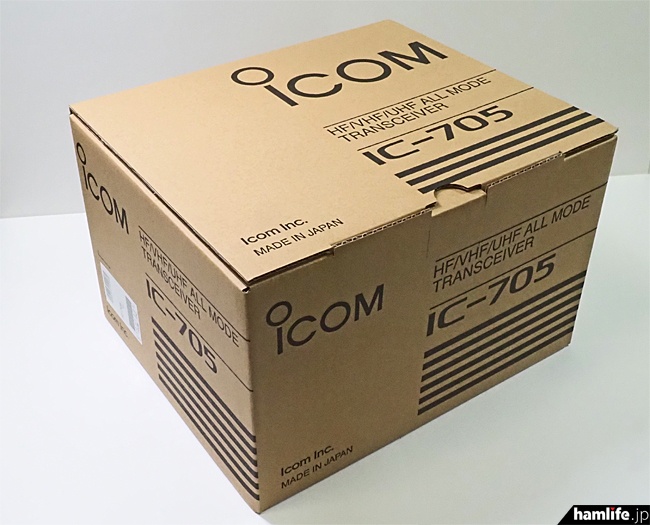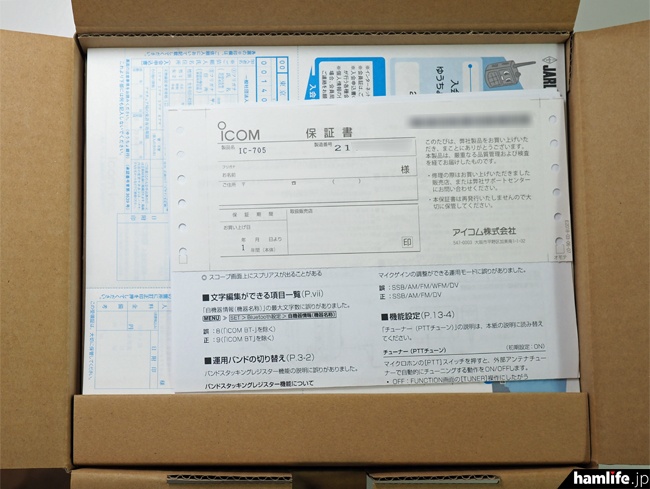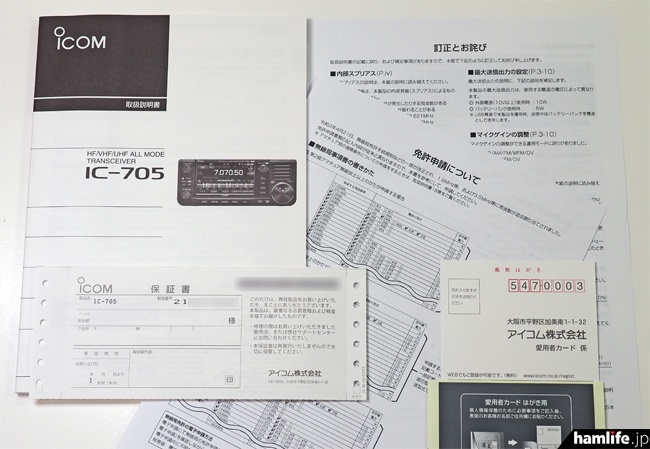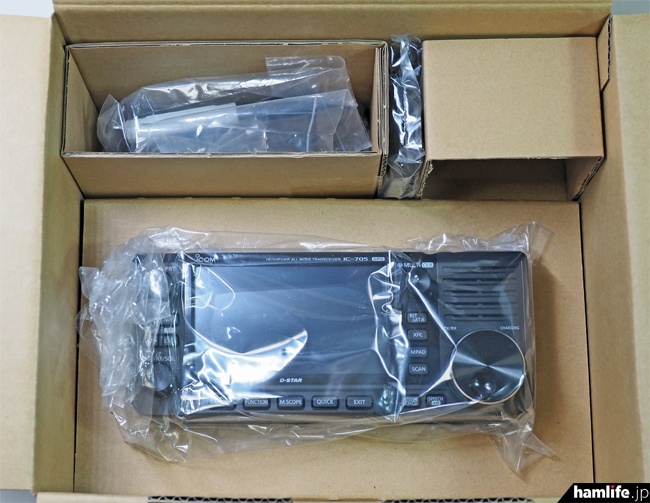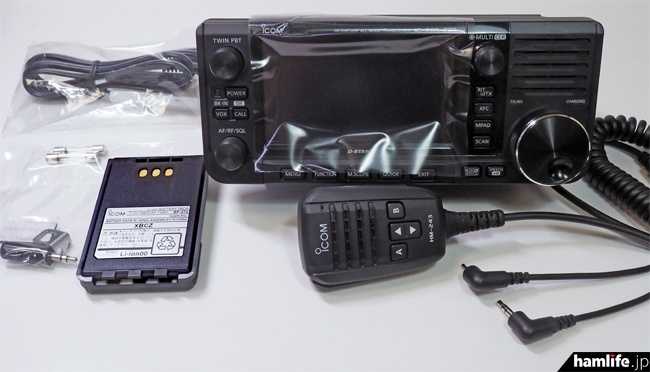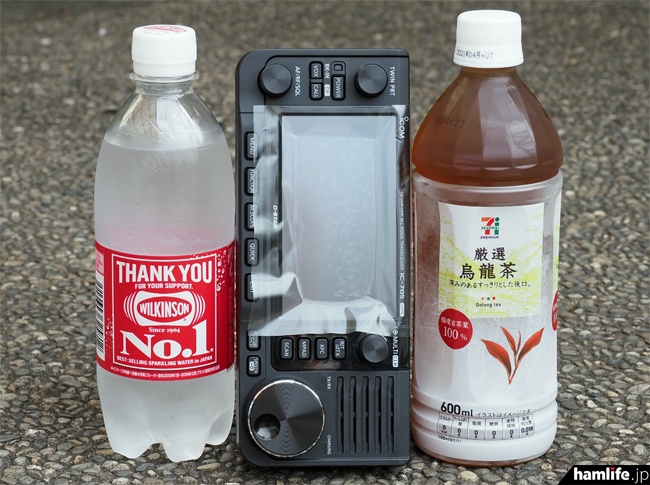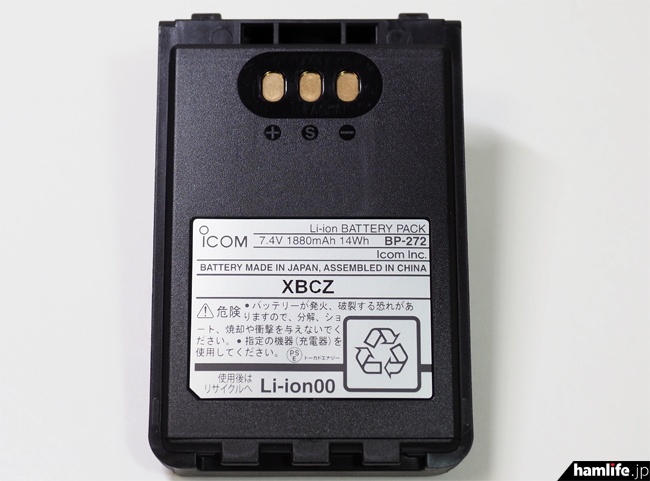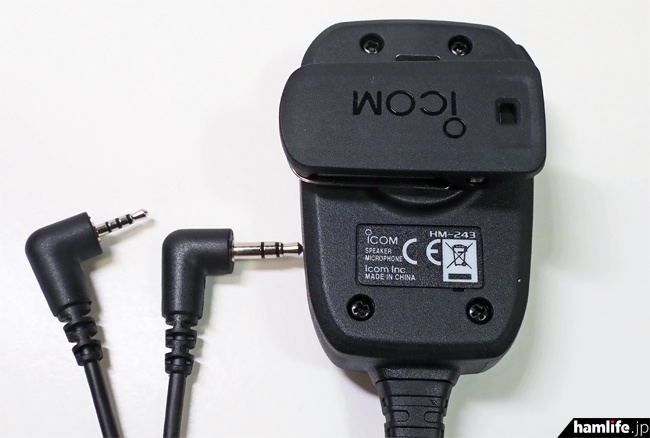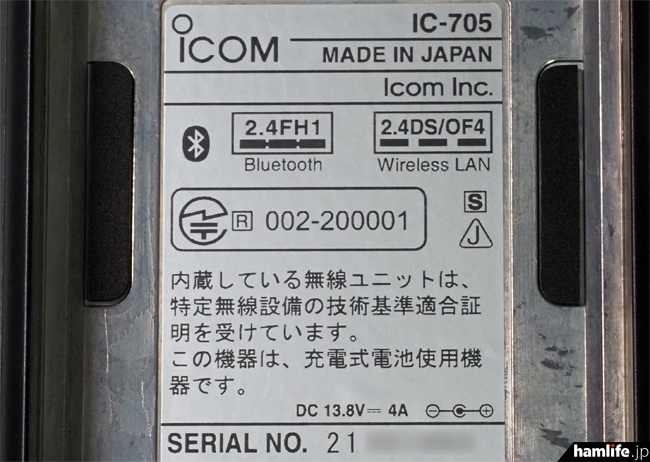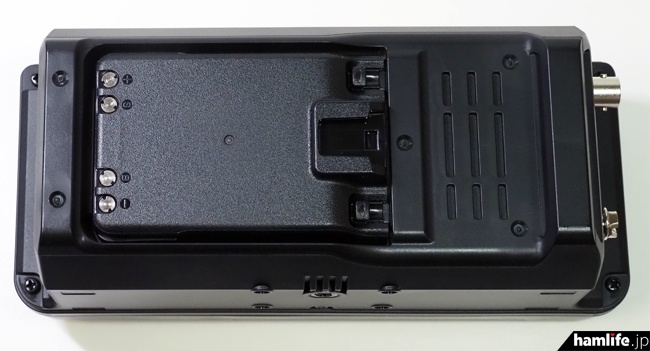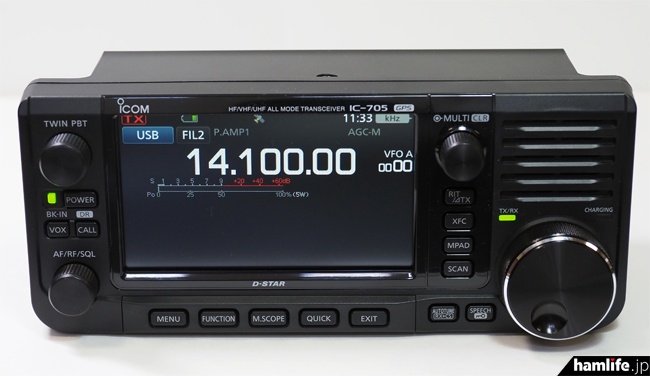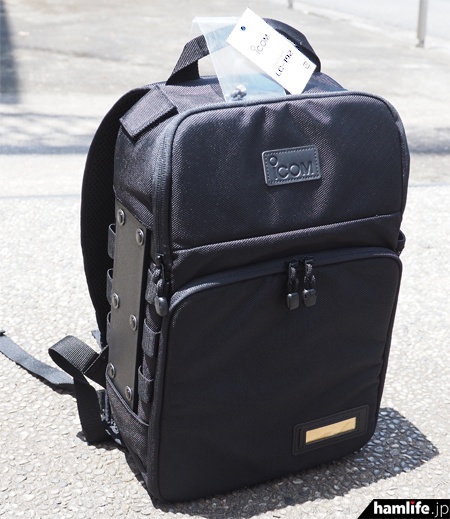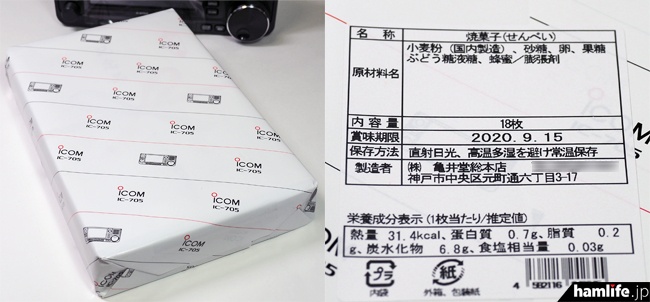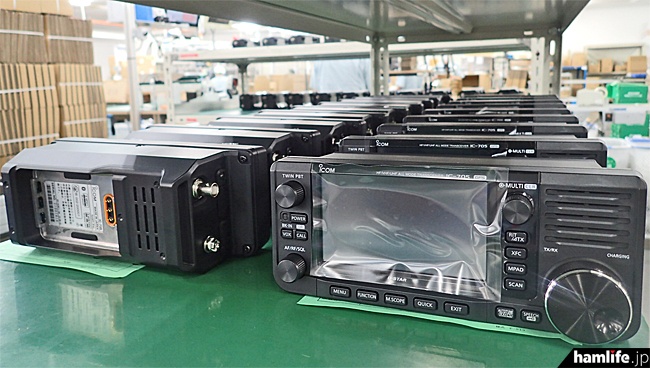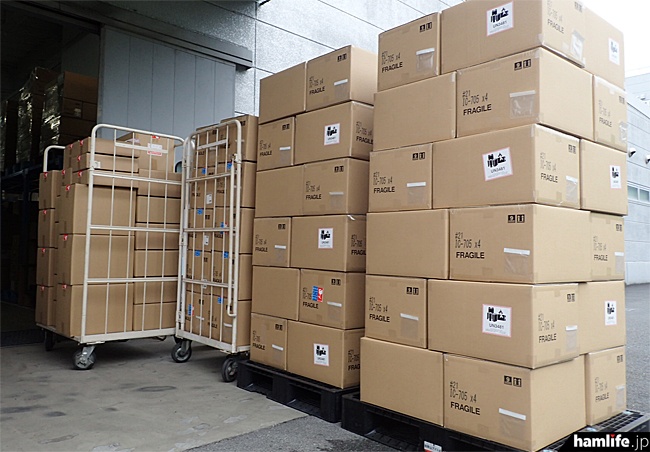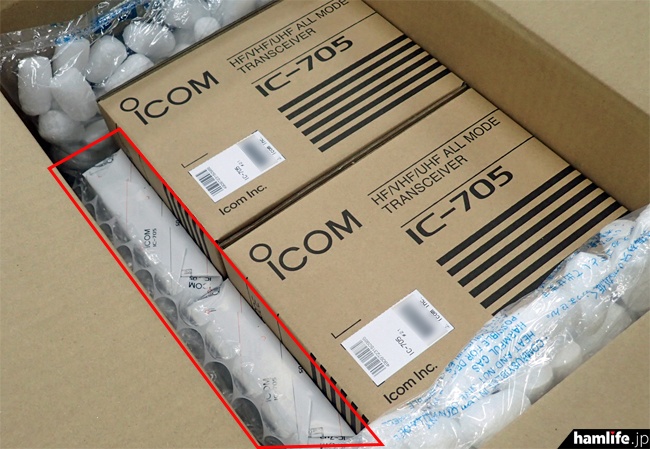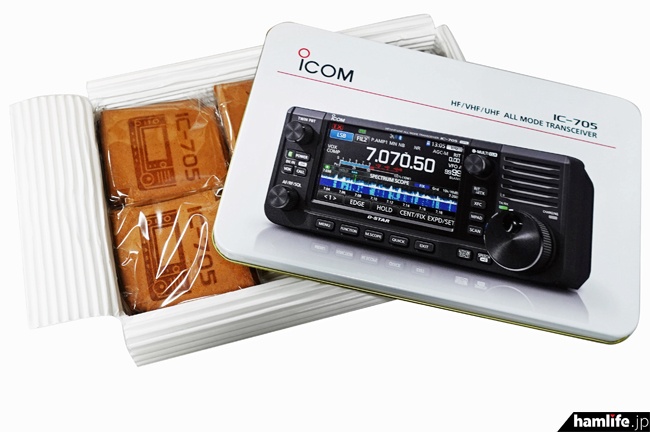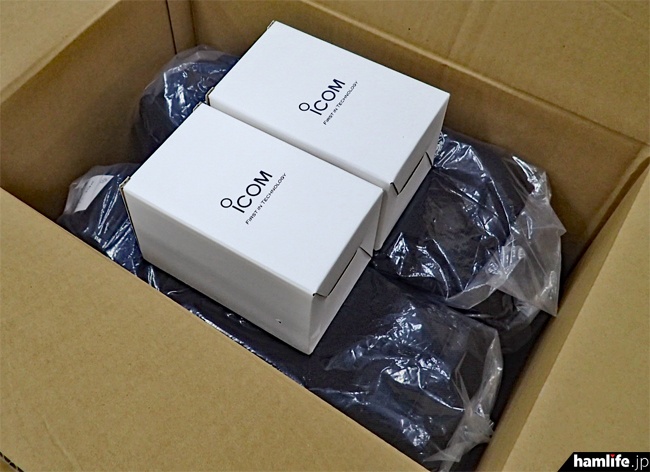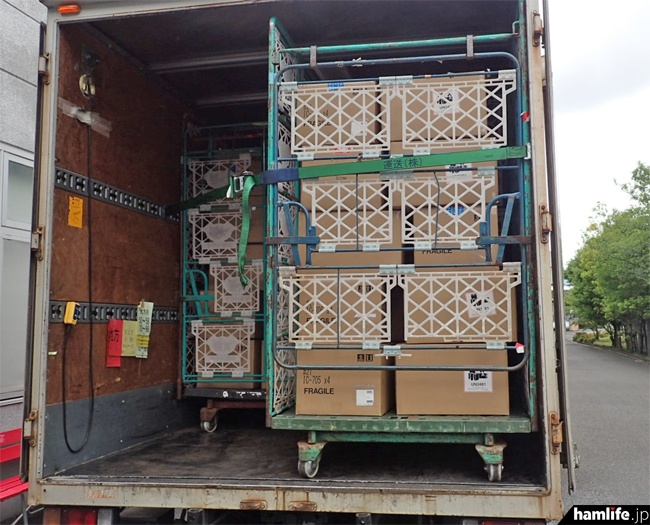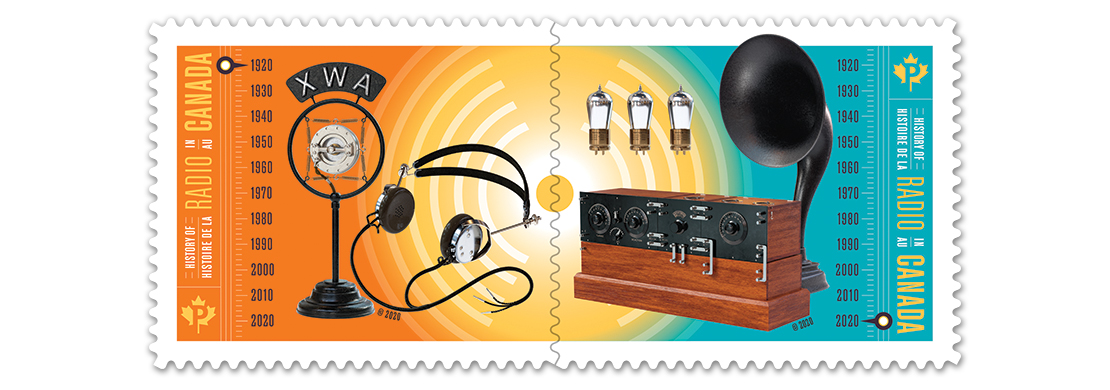The long-awaited IC-705 and dedicated rucksack LC-192 have arrived at FBGRC (FB Girls Radio Club), courtesy of Icom Co., Ltd. We apologize for the large number of readers who have booked but have not yet received it, but I will report it a little earlier.
First of all, in order to add IC-705 in advance, I applied for a license change for JL3ZGL, a corporate group bureau, but the license was granted by the Kinki Bureau of Communications as of June 1. At this point, 3MA/4MA did not yet include SSB and AM, so the 1.9MHz band was described as “3MA J3E A3E 1910kHz”. If J3E and A3E will be included in 3MA/4MA in the future, it will be simply “3MA 1910kHz”.
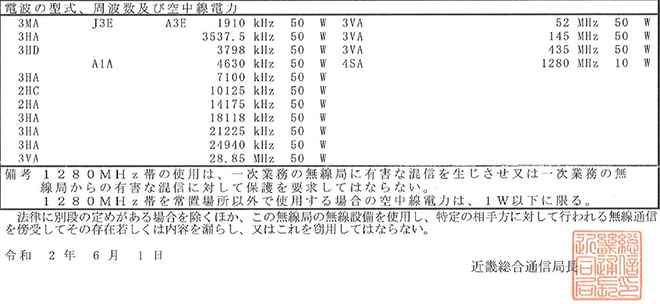
However, when actually operating SSB and AM in the 1.9 MHz band (1.8 MHz), it is necessary to deploy an efficient antenna (for example, a full-size dipole antenna) with 10 W output, and the IC-705 QSO It may not be easy to do, but readers who think it’s my own should definitely try it.
Go to Yamato Katsuragiyama!
Masaco and Erie set up the just-received IC-705 on the LC-192, a special rucksack, and aimed for Yamato Katsuragiyama (959m) on the prefectural border between Osaka and Nara.

Guts pose at the ropeway platform at Katsuragi Tozanguchi Station!
Since Mr. Masaco visited not only during the interview in March this year but also twice before that, he knows how to buy the ticket and how to board.

The weather was fine on this day and the view from the gondola was great.
On the other hand, Erie will be visiting for the first time, and Masako will guide her. “That is Yamato Sanzan, and from the left, Mt. Kogu, Mt. Uneyama and Mt. Earnari!”
Arriving at Katsuragi Yamagami Station after about 6 minutes boarding, we will depart for the summit.

Let’s go!
There is a continuous climbing path from Katsuragiyamajo Station, which is the landing point of the ropeway, to the summit, and you need some physical strength. There is no problem for Mr. Masaco who is a sports girl, but it is a tough road for Ellie who is a cultural girl.

The ID-51 is attached to the shoulder straps of the LC-192,
but two people who purposely ragchu with the IC-705 put in the backpack
Even if you are a little far away, you can continue talking normally because of the wireless communication. No problem at all. In fact, there is a theory that he wanted to do QSO with the IC-705 he brought, so he purposely climbed a distance. (Mystery)

Masaco at my own pace
Even if you can’t see the following one, it’s okay because there is a radio. You can operate IC-705 while walking by using LC-192. The V/UHF band whip antenna can be taken out from the upper antenna hole by relaying it with the BNC-L-shaped connector. (Details will be described later)

Ellie continues after a delay.
By the way, Erie is an individual call operation because IC-705 has been added to the personal station license.

When walking side by side, let go of the microphones and AF ragchu.

Mr. Masaco who arrived at the top of the mountain welcomes Erie.
After climbing the mountain road of about 1 km, the two arrived at the summit.

This place seems to be photographed on the summit camera every 10 minutes.

There is also a post box (operating only from spring to autumn) installed at the top of the mountain
After taking a commemorative photo at the top of the mountain, we moved to a wooden bench a little further down and prepared for full-scale operation.
Prior to the operation, Mr. Masaco explained the LC-192.
Fixing IC-705 body to LC-192
A belt for fixing the IC-705 is attached to the upper space of the LC-192. Use the screws provided with the LC-192 to secure this belt to the IC-705 body. As a result, the LC-192 and IC-705 are connected, so the main body will not fall down even if tilted.

The state of the camera screw on the bottom
Installing the VU whip antenna
First, attach a commercially available BNC-L type relay connector to the antenna connector on the main unit.

Insert the connector side of the antenna into the LC-192 from the antenna hole on the top of the LC-192 and connect it to the BNC-L type relay connector.

This is complete. If it is an antenna for a handy device, you can immediately operate the V/UHF band in this state. When I watched the 430MHz band, the band was so crowded that I could not imagine it in the lower world.

HF rod antenna installation example
There are various possible methods for mounting the HF antenna, but this time we will introduce two mounting examples using commercially available antennas.
1-1 Comet HFJ-350M

Using the plastic plate on the LC-192 side, fix the coil part of the HFJ-350M with a commercially available nylon saddle. HFJ-350M’s movable part is only the upper rod part, so this is OK. The trick is to attach it so that the jumper wire insertion port is on the front side.

Ellie adjusting the antenna at the rod
1-2 diamond RHM8B

Since the base of RHM8B is movable, it cannot be fixed to the plastic plate on the LC-192 side with a nylon saddle. For this reason, the company’s clip base MCRⅡ is used to fix the plastic plate.

MCRⅡ

Adjusting the movable coil part and adjusting the antenna
It is difficult to walk with both HFJ-350M and RHM8B because a counterpoise must be connected to the antenna base to install and operate these antennas.
A VU whip antenna can also be attached by using a commercially available MCRⅡ.

When I attached RH770 of the company to MCRⅡ of diamond
Let’s operate!
We decided to operate in the 7MHz band, which is popular with domestic QSOs. On this day, not only the weather but also the conditions were good, and stations all over the country were impressed. The spectrum scope of IC-705 is convenient for searching for an empty frequency in such a case.
By using the real-time spectrum scope of the IC-705, you can see the band status in the field operation as well as the fixed machine operation at home, and renew the conventional field operation.

CQ CQ CQ This is JL3ZGL/3 JL3ZGL/3 Gosho City, Nara Prefecture, please
Masaco, who used the spectrum scope to find free frequencies, immediately put out CQ. But there is no response. After that, I gave CQ many times, but there was no response. With 5W output SSB, it looks pretty tough. Even so, I was tenacious and continued to issue CQ, and there were calls from stations in 6 areas. It was a moving moment. I sent 59, but the report I received was 57. Well, it’s like this.
Even after finishing QSO with all the stations in 6 areas and issuing QRZ, it is a scene. Although the condition is good, the situation is quite different from the 50W operation with the dipole antenna that is always used in the mobile operation of JL3ZGL.
When I issued CQ, there were calls from stations in 3 areas. I was able to communicate with 13 stations in a short period of operation, partly because I got a response in such a condition and I was uploaded to J cluster on the way. I was thrilled to be able to QSO with 5W stations in 1 area on the way.

2 Ama’s Ellie tried CQ with 14MHz CW, but unfortunately no response.

Two people who survived 5W operation with YL power.
LC-192 Masaco version
Finally, Mr. Masaco showed me the inside of LC-192.

On the left side of the partition board is the Diamond power supply DSP500. This is said to be used when charging the battery of IC-705 or when operating at 10W from the hotel when AC power can be secured, such as when returning to the hotel.
On the right side of the partition board, there was a 10m long 0.5SQ vinyl wire for radial operation and a decorative pouch for HF operation.
Three spare battery packs in the mesh pocket. It seems that you are preparing for long-term operation.
Also, since LC-192 has a name plate holder, Masaco made a name plate with a call sign using the template downloaded from the Icom website. There are 12 types of templates with different designs on the homepage, and anyone can easily make a color copy.
Nameplate creation template:
https://www.icom.co.jp/lineup/options/LC-192/#nameplate

12 types of templates prepared on the Icom website
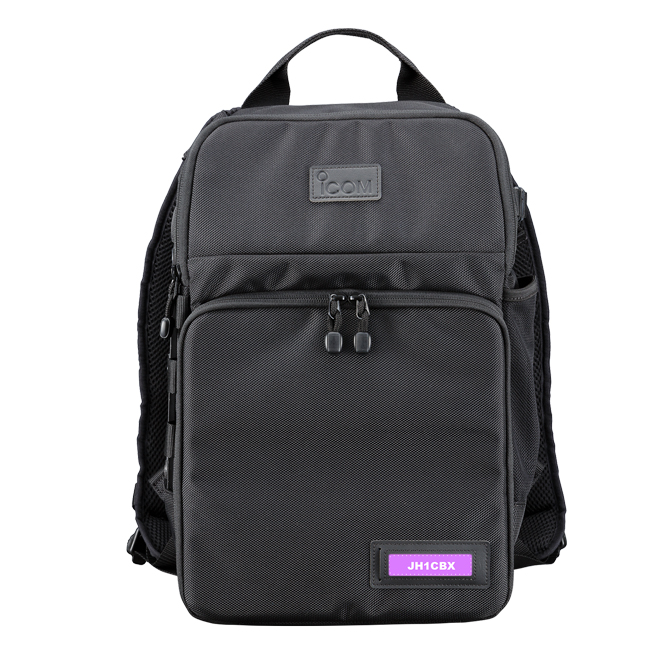
“If you put in a callsign, you’ll look like an amateur radio operator, right?” by Masaco

Commemorative photo with two people in front of Shimoyama
Although it does not fly as usual in SSB operation with 5W, the radio wave is still working properly, and this time I found that I could enjoy playing as if I could communicate with Kyushu. If I have the opportunity, I would like to carry out the second operation.
Fin.
(Note) The content of wireless communication that appears in the article is different from the actual one.


